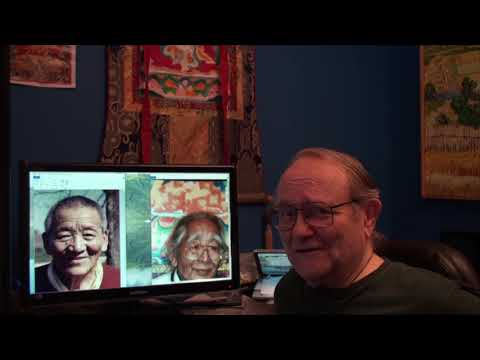Jeffrey Hopkins' commentary on the second chapter of Nagarjuna’s Fundamental Treatise on the Middle Called Wisdom.
Main reading:
- Jeffrey Hopkins: Analysis of Going and Coming, LTWA (1974)
- Chandrakirti’s and Tsong-kha-pa’s Commentaries on Nagarjuna’s Treatise on the Middle Way, Chapter Two.

Jeffrey Hopkins: Analysis of Going and Coming: Is Going Possible? Class #1 (2018-06-19) (57:18 minutes)

Jeffrey Hopkins: Analysis of Going and Coming: Is Going Possible? Class #2 (2018-06-26) (56:48 minutes)

Jeffrey Hopkins: Analysis of Going and Coming: Is Going Possible? Class #3 (2018-07-10) (49:35 minutes)

Jeffrey Hopkins: Analysis of Going and Coming: Is Going Possible? Class #4 (2018-07-17) (1:01 hour)

Jeffrey Hopkins: Analysis of Going and Coming: Is Going Possible? Class #5 (2018-07-31) (42:59 minutes)

Jeffrey Hopkins: Analysis of Going and Coming: Is Going Possible? Class #6 (2018-08-14) (41:03 minutes)

Jeffrey Hopkins: Analysis of Going and Coming: Is Going Possible? Class #7 (2018-08-21) (46:03 minutes)

Jeffrey Hopkins: Analysis of Going and Coming: Is Going Possible? Class #8 (2018-08-28) (45:48 minutes)

Jeffrey Hopkins: Analysis of Going and Coming: Is Going Possible? Class #9 (2018-09-11) (29:49 minutes)

Jeffrey Hopkins: Analysis of Going and Coming: Is Going Possible? Class #10 (2018-12-11) (49:31 minutes)

Jeffrey Hopkins: Analysis of Going and Coming: Is Going Possible? Class #11 (2018-12-18) (56:08 minutes)

Jeffrey Hopkins: Analysis of Going and Coming: Is Going Possible? Class #12 (2019-01-08) (45:16 minutes)

Jeffrey Hopkins: Analysis of Going and Coming: Is Going Possible? Class #13 (2019-01-22) (50:21 minutes)

Jeffrey Hopkins: Analysis of Going and Coming: Is Going Possible? Class #14 (2019-01-29) (52:11 minutes)

Jeffrey Hopkins: Analysis of Going and Coming: Is Going Possible? Class #15 (2019-02-05) (11:56 minutes)

Jeffrey Hopkins: Analysis of Going and Coming: Is Going Possible? Class #16 (2019-02-19) (46:40 minutes)

Jeffrey Hopkins: Analysis of Going and Coming: Is Going Possible? Class #17 (2019-02-26) (52:08 minutes)

Jeffrey Hopkins: Analysis of Going and Coming: Is Going Possible? Class #18 (2019-03-05) (1:06 hour)

Jeffrey Hopkins: Analysis of Going and Coming: Is Going Possible? Class #19 (2019-03-12) (40:48 minutes)

Jeffrey Hopkins: Analysis of Going and Coming: Is Going Possible? Class #20 (2019-03-19) (19:25 minutes)

Jeffrey Hopkins: Analysis of Going and Coming: Is Going Possible? Class #21 (2019-03-26) (56:06 minutes)

Jeffrey Hopkins: Analysis of Going and Coming: Is Going Possible? Class #22 (2019-04-02) (43:03 minutes)